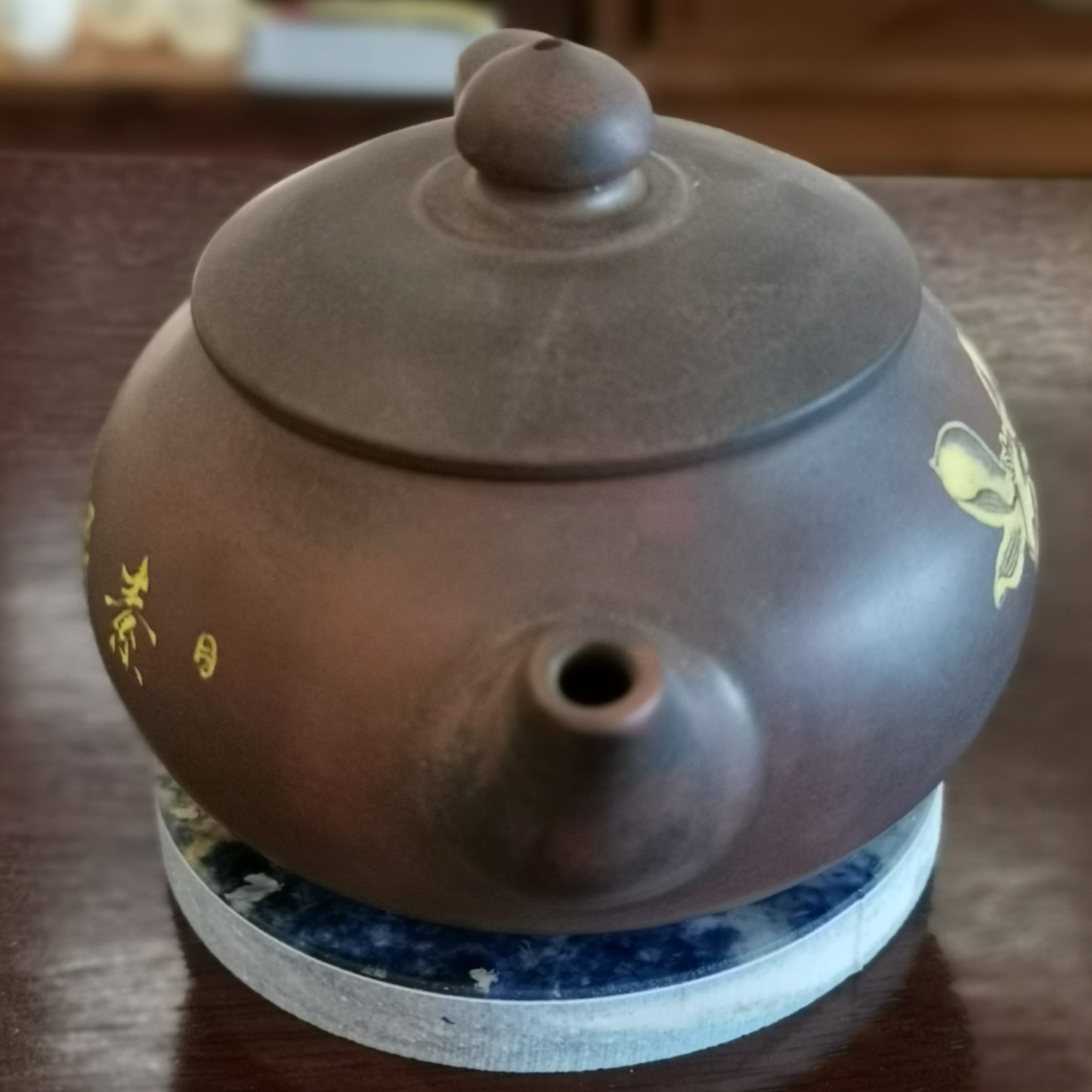Old Village Puer 老寨古茶
Tea Pot Ni Xing Tao 广西 坭兴陶茶壶 西施
Tea Pot Ni Xing Tao 广西 坭兴陶茶壶 西施
Couldn't load pickup availability
Pottery Tea Pot, Guangxi Ni Xing Pottery,
Qinzhou Ni Xing pottery, also known as Guangxi Ni Xing pottery, as a traditional folk craft, has a history of over thirteen hundred years.
According to historical records: our Qin pottery was invented before the Tang Dynasty, and it became more exquisite during the Tang Dynasty.
In the ninth year of the Republic of China (1921 AD), a large tomb was discovered at the foot of the eastern mountain in the city. Inside, there was a pottery jar and a clay stele over four feet high. The inscriptions on it contained over sixteen hundred words. After examination, it was discovered that it was the tomb inscription of Ning Daowu, the fifth generation magistrate of Ningyue Prefecture (now known as Qinzhou City) in the first year of the Tang Kaiyuan era. This discovery shows the long history of Qinzhou pottery making.
During the Xianfeng period of the Qing Dynasty, Qinzhou pottery flourished, and Ni ware became widely used, hence the name "Ni Xing".
Even today, places like "Qinzhou Street" in Hong Kong, Macau, Shanghai, and other areas are named after the spread of Ni Xing pottery, which has gained widespread fame both domestically and internationally. Alongside Jiangsu Yixing purple sand pottery, Yunnan Jianshui pottery, and Sichuan Rongchang pottery, Qinzhou Ni Xing pottery is renowned as one of China's four famous ceramics.
The "kiln transformation" art of Ni Xing pottery is unparalleled in the domestic ceramic industry, known for its exceptionally high artistic value, hence earning the title of "a unique masterpiece in China". The unique clay of Qinzhou requires no additional ceramic pigments. The "kiln transformation" produced during the firing process is a major artistic feature of unglazed Ni Xing pottery. When the temperature on the kiln plate reaches the critical point of 1200 degrees, there are occasional occurrences of slight changes in some parts of the body, naturally forming various colourful and intricate patterns. The true nature of these patterns is revealed only after polishing the surface oxide, displaying unexpected colours like sky blue, antique bronze, tiger stripes, big spots, dark green, and many others. It is truly a treasure found in the fire. Rare and unmatched, each piece is unique in hand, with no comparison. Kiln transformation art pottery. To achieve the highest artistic effect, it is necessary to combine craftsmanship design, modelling, and decorative carving, integrating the essence of spring warmth, summer greenery, autumn redness, and winter coldness into one. Revealing the mysteries of colour changes. Kiln transformation is like finding a treasure in the fire. It is obtained by chance, with no fixed pattern, extremely precious in taste, the ultimate combination of fire and earth."
钦州坭兴陶作为一种传统民间工艺,至今已有一千三百多年历史。
据史志记载:我钦陶器,发明于唐以前,至唐而益精致。
民国九年(公元1921年)城东山麓发现逍遥大冢。内藏陶壶一只及高四尺余陶碑一方。镌字千六百余言,经考证,始知乃唐开元年宁越郡(即现钦州市)第五世刺史宁道务墓志,可见钦州制陶历史之久远。传至清朝咸丰年间,钦州陶器发展鼎盛,坭器得以广泛兴用,故得名”坭兴”。
现今香港、澳门上海等地的“钦州街”皆因坭兴陶的流传而有此命名,钦州坭兴陶一时威名远播海内外。与江苏宜兴紫砂陶、云南建水陶、四川荣昌陶享誉中外,被誉为中国四大名陶之一。
坭兴陶的“窑变”艺术在国内陶瓷行业中绝无仅有,艺术品位极高,故有“中国一绝” 之称。
钦州特有的陶土,无需添加任何陶瓷颜料。在烧制过程所产生的“窑变”是无釉坭兴陶的一大艺术特色,当炉盘上 升到1200度的临界点时,偶有发现其极少部份胎体发生窜变现象,并自然形成各种斑斓绚丽的色彩和纹理,须打磨表层氧化物后才发现其真面目,如天蓝、古铜、虎纹、大斑、墨绿等意趔不到的诸多色泽,可谓火中求宝。
难得一件,一件在手,绝无类同”。 窑变艺术陶。要达到最高境界的艺术效果,还必须要通过工艺设计造型,画面雕刻装饰结合,集春暖、夏绿、秋红、冬寒之灵气于一体。尽显色彩变化之奥妙。窑变乃火中求宝。得之偶然。并无定格,品位极珍,可谓火与土结合之极至。
Share








